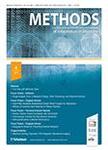版权所有:内蒙古大学图书馆 技术提供:维普资讯• 智图
内蒙古自治区呼和浩特市赛罕区大学西街235号 邮编: 010021

作者机构:Univ Med Ctr Hamburg Eppendorf Dept Diagnost & Intervent Neuroradiol D-20246 Hamburg Germany Univ Med Ctr Hamburg Eppendorf Dept Computat Neuroscience D-20246 Hamburg Germany Univ Munster Dept Epidemiol & Social Med Munster Germany Univ Munster Dept Neurol D-48149 Munster Germany Univ Munster Dept Clin Radiol Munster Germany
出 版 物:《METHODS OF INFORMATION IN MEDICINE》 (Methods Inf. Med.)
年 卷 期:2013年第52卷第6期
页 面:467-474页
核心收录:
学科分类:1204[管理学-公共管理] 1001[医学-基础医学(可授医学、理学学位)] 0812[工学-计算机科学与技术(可授工学、理学学位)] 10[医学]
主 题:Magnetic resonance imaging angiography arteries statistical atlas computer-assisted image processing
摘 要:Objectives: The cerebroarterial system is a complex network of arteries that supply the brain cells with vitally important nutrients and oxygen. The inter-individual differences of the cerebral arteries, especially at a finer level, are still not understood sufficiently. The aim of this work is to present a statistical cerebroarterial atlas that can be used to overcome this problem. Methods: Overall, 700 Time-of-Flight (TOF) magnetic resonance angiography (MRA) datasets of healthy subjects were used for atlas generation. Therefore, the cerebral arteries were automatically segmented in each dataset and used for a quantification of the;vessel diameters. After this, each TOF MRA dataset as well as the corresponding vessel segmentation and vessel diameter dataset were registered to the MM brain atlas. Finally, the registered datasets were used to calculate a statistical cerebroarterial atlas that incorporates information about the average TOF intensity, probability for a vessel occurrence and mean vessel diameter for each voxel. Results: Visual analysis revealed that arteries with a diameter as small as 0.5 mm are well represented in the atlas with quantitative values that are within range of anatomical reference values. Moreover, a highly significant strong positive correlation between the vessel diameter and occurrence probability was found. Furthermore, it was shown that an intensity-based automatic segmentation of cerebral vessels can be considerable improved by incorporating the atlas information leading to results within the range of the inter-observer agreement. Conclusion: The presented cerebroarterial atlas seems useful for improving the understanding about normal variations of cerebral arteries, initialization of cerebrovascular segmentation methods and may even lay the foundation for a reliable quantification of subtle morphological vascular changes.